Auctions
Who Won Auction Week? Here Are 9 Takeaways From New York’s Nearly $2 Billion Fall Sales
From the priciest work to the wettest paint (and more), here are our parting observations from New York's marquee auctions this November.
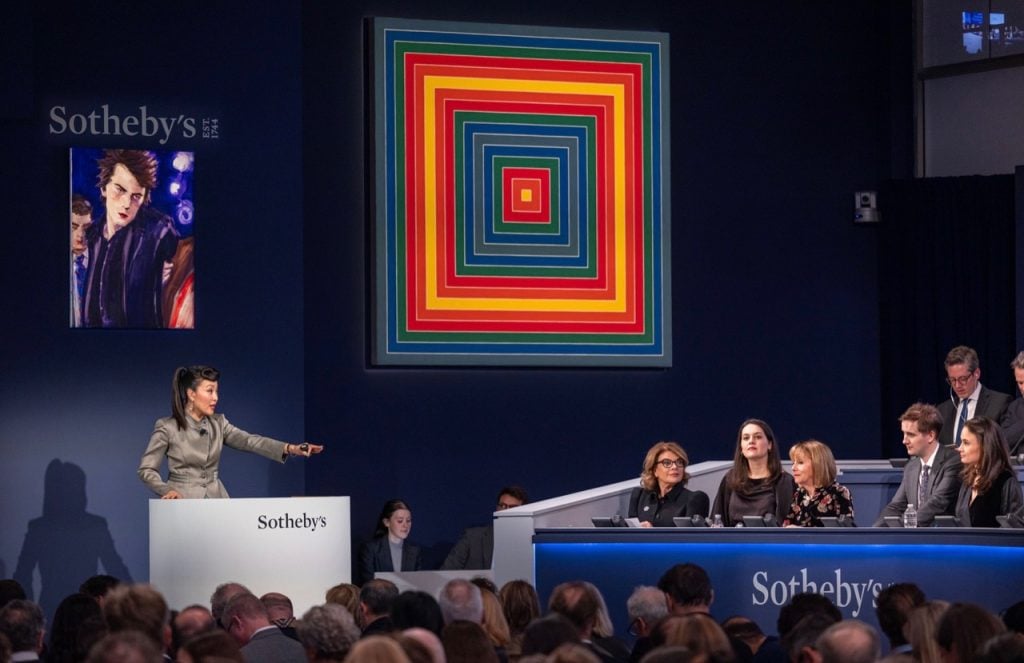
From the priciest work to the wettest paint (and more), here are our parting observations from New York's marquee auctions this November.

Artnet News

Now that the dust has settled, Artnet News’s crackerjack market team in New York—Annie Armstrong, Katya Kazakina, and Eileen Kinsella—are taking stock of auction week(s) at the Big Three houses.
Some might say it was inevitable that the marquee evening sale takings dropped by more than 30 percent year-over-year, considering the stiff competition posed by last year’s exceptional offerings, including the $1 billion-plus collection of Paul Allen at Christie’s. Still, even the A+ material this year—like the sterling collection of the late Emily Fisher Landau—failed to produce the fireworks seen in previous years.
One reason for the less-than-stellar results from the auction season was the rash of withdrawals that plagued all three houses over the course of the two-week marathon.
Sotheby’s notably slim modern art evening sale, which began with 41 lots (compared to Christie’s 65-lot offering) got even thinner as the night went on. In previous seasons when consignors decided to withdraw lots, it was typically accompanied by a presale proclamation. Despite the confident posturing of the auctioneer, a bevy of hasty mid-sale announcements this year revealed an atmosphere of uncertainty. A startling eight works—what amounts to 20 percent of the sale—were withdrawn.
That group included works by Pablo Picasso, Richard Diebenkorn, René Magritte, Fernand Léger, and Diego Rivera. The priciest lot to be withdrawn was a Philip Guston painting with a low estimate of $6 million.
The froth of previous years also appears to have faded from the contemporary market. Still, milling around over flutes of champagne before Sotheby’s “the Now” sale, one respected collector remained optimistic about the state of the market. He noted that although contemporary works weren’t flying off the block like they do during market peaks, excellent “example” pieces were still seeing healthy sell-through rates. “It’s the most example driven market I’ve seen,” he said. “Two years ago, it was all about name. Now people want a perfect example of an artist. You know it’s bad when people pass on the example pieces. That’s not happening.”
Read on for our key takeaways and highlights of the past two jam-packed auction weeks in New York.
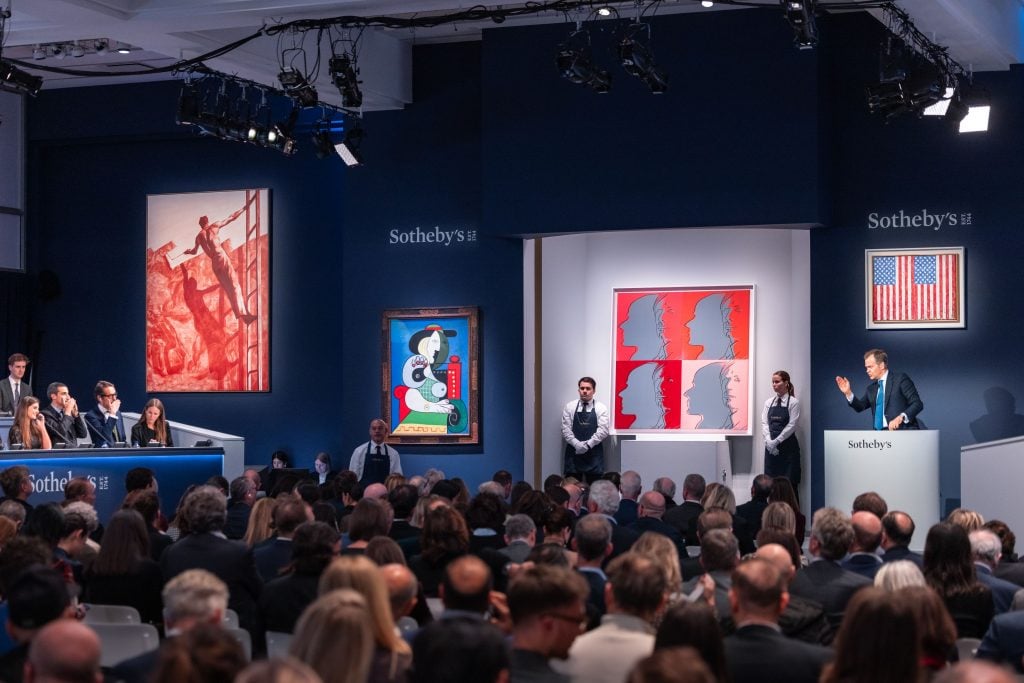
The room at Sotheby’s evening auction of the collection of Emily Fisher Landau. Courtesy of Sotheby’s.
Heading into the season Sotheby’s was poised to come out on top—and it did—with presale estimates of $789 million to $1.05 billion, followed by Christie’s with estimates set at a range of $630 million to $900 million, followed by Phillips at $142.7 million.
That pecking order prevailed in the totals: Sotheby’s pulled in a top total of $936.5 million for four evening sales (and that’s not including the sale of a 1962 Ferrari GTO for $51.7 million that the house tossed into their own evening sale total), followed by Christie’s with $748.3 million, and Phillips, where the evening sale took in $155 million. In total, the evening sales pulled in $1.84 billion, which fell below the high-end $2 billion estimate and down 32 percent from last fall’s recorded $2.6 billion in sales.
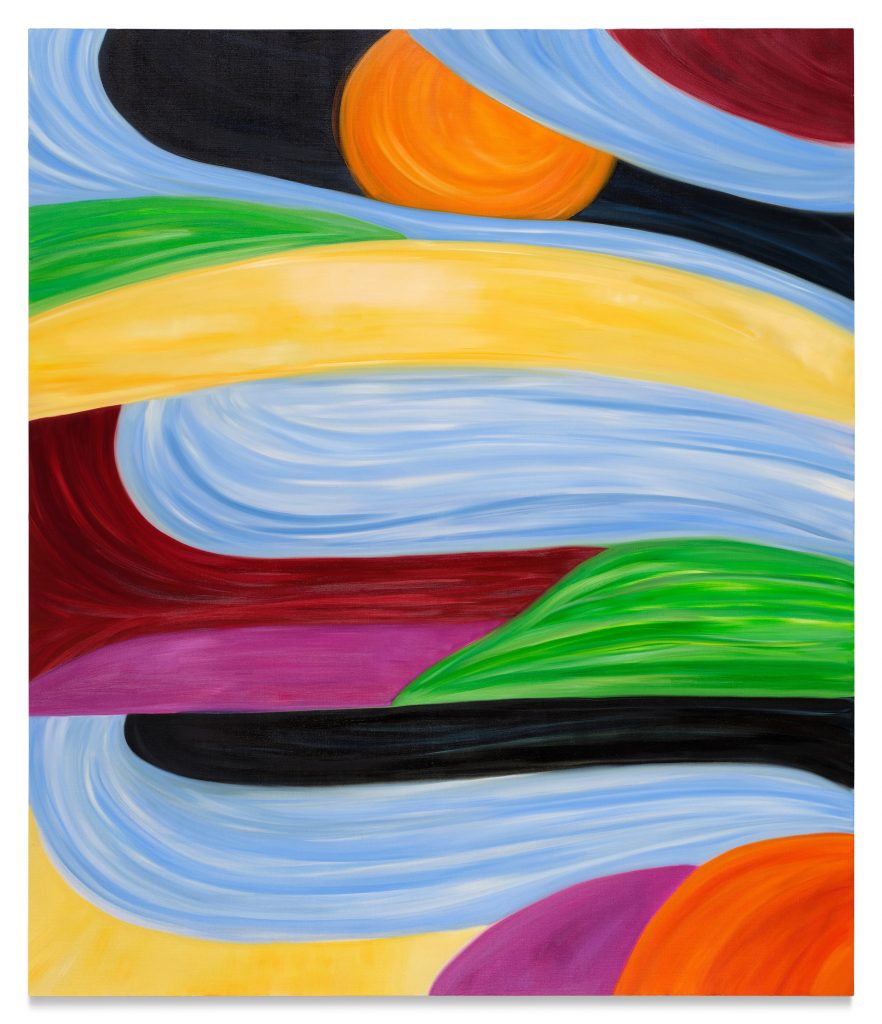
Marina Perez Simão, Untitled (2022). Courtesy of Sotheby’s.
This gestural canvas set 33 year-old Marina Perez Simão’s auction record at Sotheby’s “the Now” auction, bringing in a cool $422,000 over its $80,000 to $120,000. Simão is represented by both Mendes Wood DM and Pace, and this fast-selling work indicates a keen market for the Brazil-based artist, as it was only completed a year ago and purchased from her debut show at Pace in London, “Onda”.
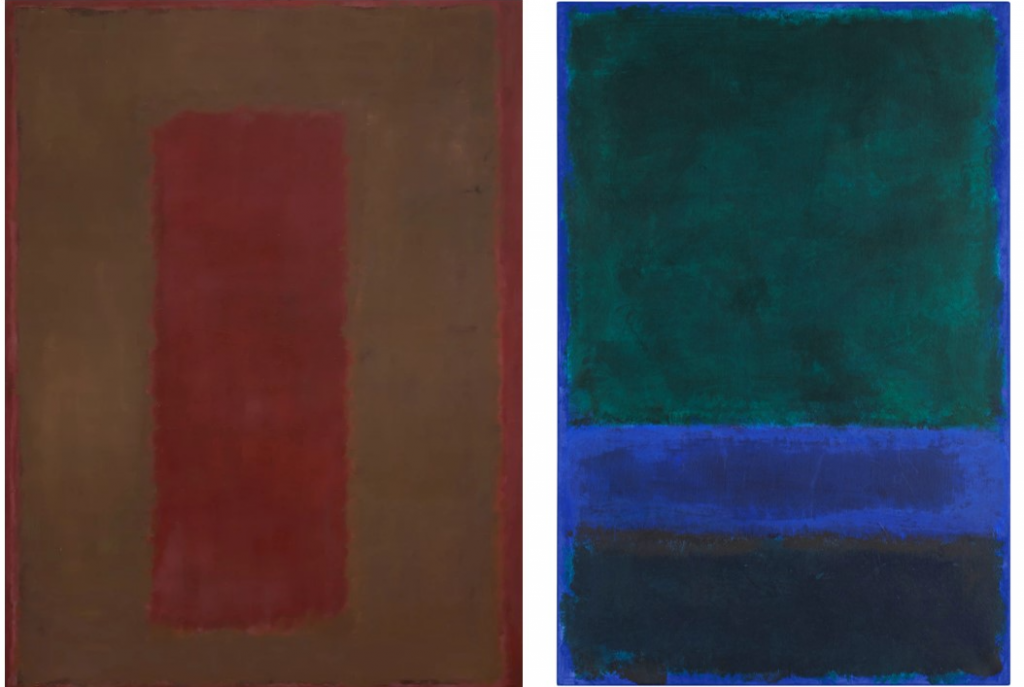
Left: Mark Rothko, Untitled (1958) from the “Seagram” series; right: Mark Rothko, Untitled (1968). Courtesy of Sotheby’s.
“Selectivity” is always a buzzword during auction season, bandied about as a catchall to explain why certain works sell while others flounder. Here’s a concrete example of renewed market selectivity, evidenced by two very different reactions to Rothko.
While Emily Fisher Landau’s gloomy adobe-hued Rothko canvas from the esteemed “Seagram” series hammered at $19 million, way under the presale estimate of $30 million to $40 million, a much smaller, luminous work on paper by the artist obliterated the $7 million to $10 million presale estimate, hammering at $20.5 million.
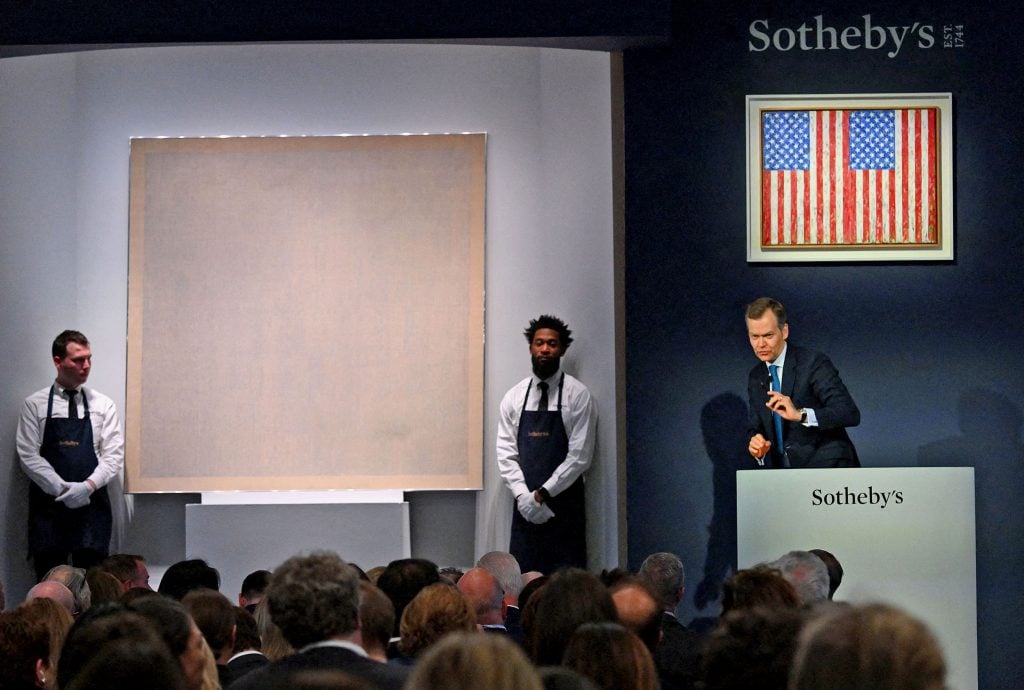
Auctioneer Oliver Barker takes bids for Agnes Martin’s Grey Stone II at Sotheby’s. Photo: Angela Weiss/AFP via Getty Images.
Agnes Martin emerging as a star of the 2023 auction season was not on our bingo card. But the quiet, contemplative genius of Martin’s canvas is clearly an appealing selling point amid the noise of the outside world. Martin’s 1961 work Grey Stone II came up as part of Sotheby’s blockbuster Emily Fisher Landau Collection sale, where it was estimated to sell for $6 to $8 million, and ended up hammering at a whopping $16 million ($18.7 million with fees) after a restrained, yet intense bidding war, setting a new benchmark for the artist.
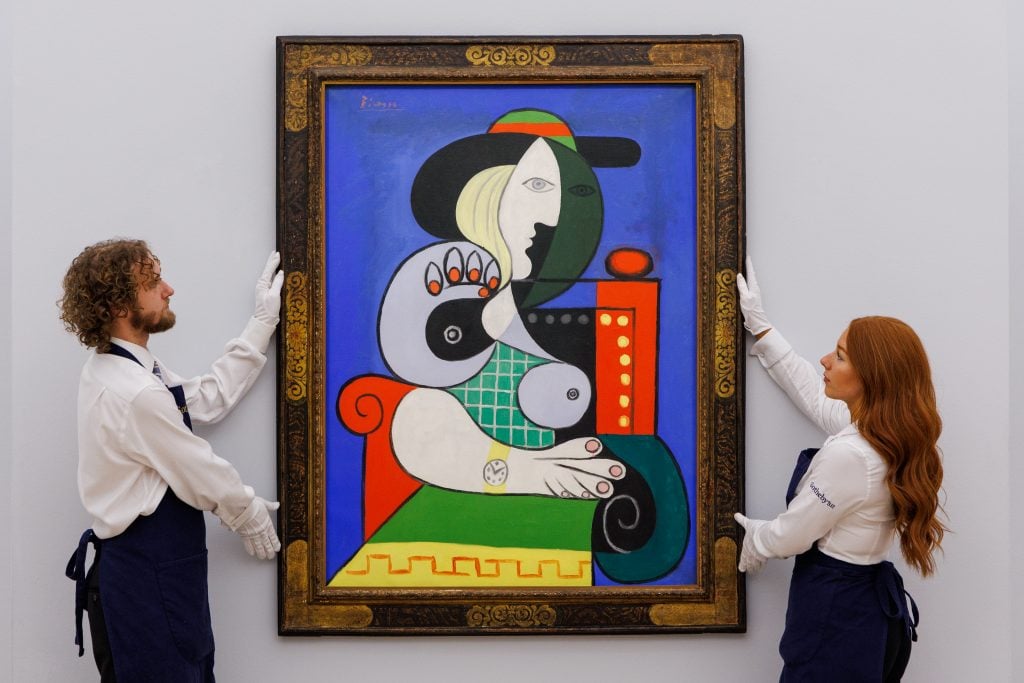
Pablo Picasso’s Femme à la montre (1932) at Sotheby’s. Photo by Tristan Fewings/Getty Images for Sotheby’s.
Pablo Picasso’s Femme à la montre, the cornerstone of Emily Fisher Landau’s collection fetched $139.4 million (including fees) at Sotheby’s on Nov. 8. Fisher Landau acquired the 1932 portrait of Picasso’s lover Marie-Thérèse Walter in 1968 from Pace Gallery. It remained in her collection until it came up for sale at Sotheby’s this month, generating $425 million. Estimated at $120 million, the portrait toured the world prior to the sale. Bidding started at $95 million and drew three hopefuls, hammering at $121 million. The winner was a client of Brooke Lampley, chairman of Sotheby’s fine art division, whose clients include billionaire collectors Ken Griffin and Stephen Schwarzman.

Dealer Leo Koenig with his Gerhard Richter “Strip” painting. Photo courtesy Leo Koenig.
Back in 2016, Chinese mogul Liu Yiqian made the news when he snapped up a 36-foot-wide Gerhard Richter painting, Strip, at Art Basel fair for €3 million. Last week, Sotheby’s offered the work at $2 million to $3 million during its evening sale of contemporary art. Art dealer Leo Koenig, a Richter fan, offered Sotheby’s an irrevocable bid at $1 million. Evidently, he was the only person interested in the work and ended up getting it for $1.3 million, including fees. Koenig attributed the work’s 70 percent drop in value to its intimidating scale and Sotheby’s guarantee, which made the auction house willing to accept his lowball bid.
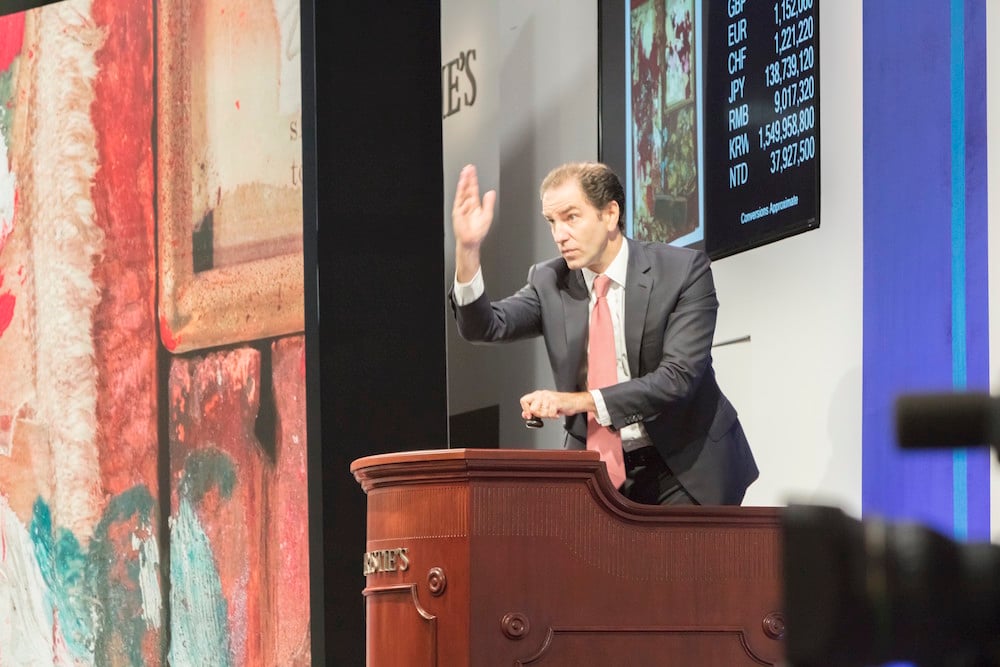
Adrien Meyer. Image courtesy Christie’s.
During Christie’s marathon 20th-century evening sale on Thursday November 9, more than 60 lots were offered. With evening sales averaging about 20 lots per hour, that could mean attendees were in for a very long night.
Auctioneer Adrien Meyer, who oversaw the second half of the sale, was cognizant of the timing and the risk of auction fatigue. At one point he nudged a specialist on the phone bank with the not-so-subtle remark: “People have dinner plans,” drawing chuckles from those who did indeed have reservations around Manhattan. The sale clocked in at about two and a half hours total.

Joan Mitchell, Untitled (ca. 1959). Courtesy of Christie’s Images, Ltd.
Each auction house offered a prized Joan Mitchell painting this season, generating a good deal of speculation over how the late abstract painter’s market would fare during an uncertain market. Two works in particular rivaled to set a new auction record for a Mitchell: an 1959 untitled canvas at Christie’s (estimated at $25 million to $35 million), and Sunflowers, a two-panel work painted late in her life, around 1990-1991, at Sotheby’s (estimated at $20 million to $30 million).
Auction observers made bets over whether the rare early work would claim the prize, or if the other, stellar example would emerge the victor. In the end, the early bird got the worm, selling for a whopping $29.2 million, which is just $1.3 million over the final price for Sunflowers. May those gambling on the outcomes settle their debts now.
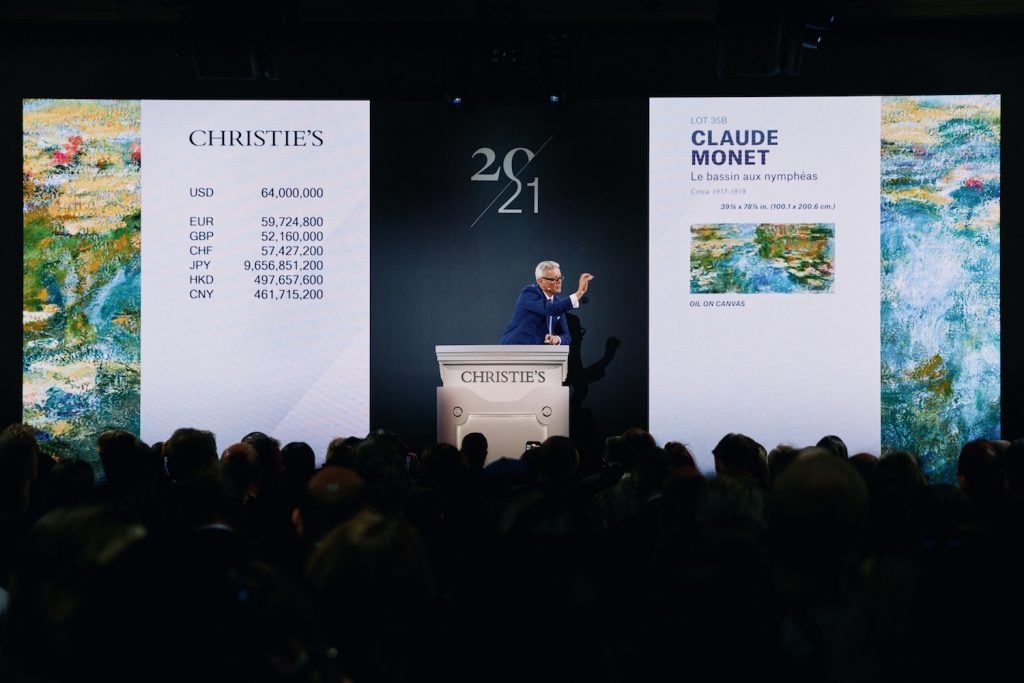
Jussi Pylkkänen selling the top lot of Christie’s 20th Century evening sale, Monet’s, Le bassin aux nymphéas for $74 million.
The November 9 sale also marked the end of an era as veteran Christie’s auctioneer Jussi Pylkkänen marked his final sale before embarking on a new career as a private advisor. Pylkkänen bid adieu after 38 years with the house, where he started his career working the front desk at the tender age of 22.
Pylkkänen, who handled the first half of the sale in a light-hearted mood, thanked clients and colleagues profusely for what he described as “amazing adventures,” over the years. He left the rostrum at the sale’s halfway mark to a standing ovation in the room right after handing the top lot of the night: Claude Monet’s Le basin aux nympheas. Farewell, Jussi!